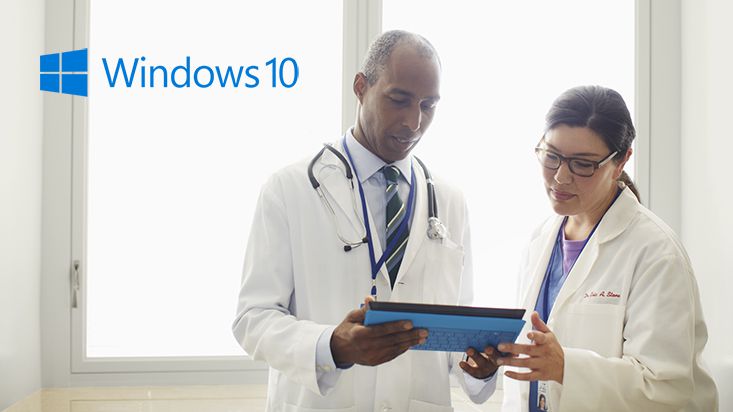Improve quality and extend reach of patient care with Windows 10
Despite the differences in their makeup and areas of focus, many health organizations base their work on the same purpose: providing high quality care and services to as many people as possible. Increasingly, health systems, public health agencies and individual clinicians are using specific, quantifiable measures of patient care as key indicators of their success, and to identify areas of need for their communities. If one force drives the worldwide healthcare industry, it’s that singular goal to administer high quality care.
The ability to provide high quality care depends on a number of factors, including intimate knowledge of patient populations, a broad clinician base with expertise in different specialties, and individual emotional connections between patients and their caregivers. In recent years, we’ve seen technology play a more significant role in care delivery by helping connect people and information quickly and efficiently, allowing health professionals to spend more time diagnosing, treating and engaging with patients.
By its nature, delivering quality healthcare is a mobile endeavor. Caring for patients requires health professionals to constantly be on the move, both inside and outside of hospital walls. Access to electronic medical records (EMR) is critical, as is the ability to easily interact with and manage devices. And with the increasing threat of cybercrime, there is an industry imperative to deliver more secure solutions that empower on-the-go professionals.
Transforming the way health professionals work
Today marks the launch of Windows 10. With Windows 10, we aim to meet and exceed the needs of health professionals so that they can work more efficiently, improve care and extend the reach of clinical services beyond hospital walls. We listened to your feedback about Windows 7, 8 and 8.1 and we are confident that Windows 10 will help drive mobile health forward. Some of the many benefits Windows 10 will bring to health organizations include:
- Mobility and productivity for your health environment. With the familiar Start Menu, Task Bar, and Desktop and innovative features like Continuum, which optimizes your apps across touch and desktop modes, care teams will be able to fluidly interact with personal and professional devices, access critical EHR/EMR systems, and connect with each other wherever they may be – from intensive care units to home health visits or social care offices. And with the Windows 10 experience being so familiar to Windows users, organizations will have little to no user training to undertake to move from Windows 7, 8 or 8.1.
- A more secure, private computing experience. Windows 10 is the most secure Windows ever. With Windows 10, healthcare professionals can replace passwords with more secure options, such as biometrics and hardware-based multi-factor credentials. New advancements, such as Credential Guard protect login credentials by containing them in the hardware. With Device Guard and Secure Boot, Windows 10 enables health organizations to block attacks by allowing devices to run trusted software only.
- New levels of engagement. Integration with existing systems and software, including more secure voice, chat, text and video, enables health professionals to connect with patients when and where it’s most convenient. By connecting new devices and platforms, like Microsoft Band and Microsoft Health, long-term care and chronic disease management can be extended to the home, and patients can proactively manage their health and wellness.
Bringing Windows 10 to your organization
We encourage health organizations to start evaluating, piloting and deploying Windows 10 today. IT administrators can test their business applications now by joining the Windows 10 Enterprise Insider Preview, where support and training are also available. Starting August 1st, our Software Assurance customers can download Windows 10 Enterprise Edition from Microsoft Volume Licensing site.
For specifications, requirements and instructions on how to upgrade to Windows 10 Home and Pro editions and to find detail on Windows 10 enterprise offerings visit our Windows for Your Business blogand www.windows.com/business for information about features and to evaluate which edition may be best for your organization.
Over the next several months, we will continue exploring how mobility and productivity solutions from Microsoft and our global ecosystem of partners and customers help health professionals better serve patients.
What do you think about Windows 10? Tell us via email, Facebook, or Twitter.





